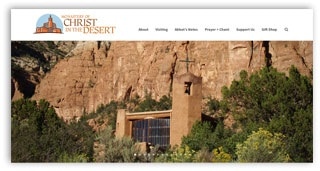1From holy Easter to Pentecost, the brothers eat at noon and take supper in the evening. 2Beginning with Pentecost and continuing throughout the summer, the monks fast until mid-afternoon on Wednesday and Friday, unless they are working in the fields or the summer heat is oppressive. 3On the other days they eat dinner at noon. 4Indeed, the abbot may decide that they should continue to eat dinner at noon every day if they have work in the fields or if the summer heat remains extreme. 5Similarly, he should so regulate and arrange all matters that souls may be saved and the brothers may go about their activities without justifiable grumbling. 6From the thirteenth of September to the beginning of Lent, they always take their meal in mid-afternoon. 7Finally, from the beginning of Lent to Easter, they eat towards evening. 8Let Vespers be celebrated early enough so that there is no need for a lamp while eating, and that everything can be finished by daylight. 9Indeed, at all times let supper or the hour of the fast-day meal be so scheduled that everything can be done by daylight.
Commentary by Philip Lawrence, OSB, Abbot of Christ in the Desert
Saint Benedict determines the times for the Divine Office and now the times for the meals of the brothers. With the Divine Office and the meals determined, everything else has to fit in as it can. We see, as noted in previous commentary, that only Easter to Pentecost, the season of Easter Time, has two meals a day. Generally the monk eats only one meal a day. This is the basic outline:
- Easter Season: two meals, one at noon and one in the evening
- Pentecost until September 13: one meal, normally at noon, but on Wednesdays and Fridays after None
- September 13 to Lent: one meal, after None every day
- Lent: one meal, after Vespers
This seems impossible for men of our own day. There is never any breakfast, either. Even in comparison with other monastic Rules of the time, Saint Benedict is pretty ascetic in the matter of meals and eating. We can remember, of course, that generally there was only meal permitted to monks following almost any monastic Rule. When, in Easter time, there are two meals, then part of the food from the first meal is set aside for the second meal. It is not an increase of food, but the same amount of food eaten at two sittings!
For us today, it is important that we think about the discipline of eating and that we begin to reflect on the relationship between eating and praying, between eating and the discipline of the moral life, between eating and caring for one another in community.
For modern cultures, in spite of all the focus on wholistic thinking and on natural living, most people do not associate any relationship between eating and praying. In spite of that, practically the whole early tradition recognizes that if a person overeats, the prayer life is affected adversely. Is that true! Here it is best if each one of us reflect son his or her own experience. Likewise almost all of the tradition insists that if a person is not disciplined in eating, that person cannot be disciplined in the moral life. Is that true! Again, one must listen to one’s experiences here. And finally, is there any relationship between eating and truly caring for one another in the monastic community?
For many of us, our personal experience after many decades of monastic life is that this is all true. So we can pray that we will find a good discipline of eating in our own monastery.


